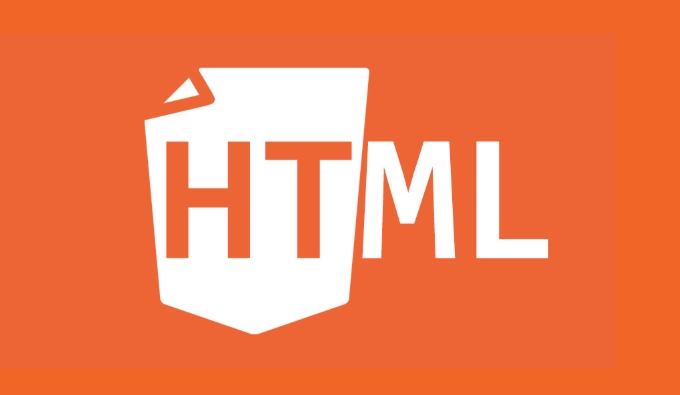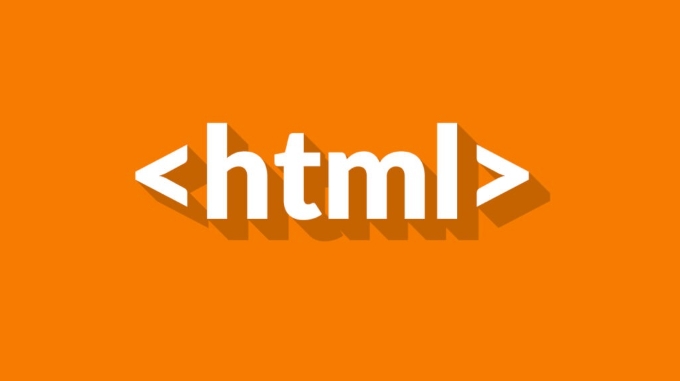The HTML <abbr> tag is ideal for adding tooltips and improving accessibility for abbreviations. 1. It displays tooltips by default when a title attribute is included. 2. Screen readers announce the full explanation of abbreviations, enhancing accessibility. 3. It is best used for acronyms like "ARIA" or "FAQ" and unfamiliar terms like "WCAG." 4. It should not be used for general tooltips such as those for icons. 5. It can be styled with CSS, often with a dotted underline to indicate extra information. 6. For advanced tooltip control, custom JavaScript solutions are needed. 7. Combining <abbr> with ARIA attributes supports more complex accessibility scenarios. While support varies across screen readers and it doesn’t work well on touch devices without JavaScript, it remains a semantic and effective choice for explaining abbreviations.

When you want to add a simple tooltip or improve accessibility for abbreviations on a webpage, the HTML abbr tag is a straightforward and effective choice. It does more than just style text—it helps browsers and screen readers understand context, and it can display a tooltip by default when you include a title attribute.

What the abbr Tag Does
The <abbr></abbr> tag stands for "abbreviation" or "acronym." When you wrap an abbreviation like "HTML" or "A11Y" in this tag and add a title, browsers will show that text as a tooltip when a user hovers over it. More importantly, screen readers will read the full explanation aloud, which improves accessibility for users who rely on assistive technologies.
For example:

<abbr title="Accessible Rich Internet Applications">ARIA</abbr>
When someone hovers over "ARIA," they’ll see a tooltip that says "Accessible Rich Internet Applications." Screen readers will also announce both the abbreviation and the expanded form.
This works out of the box—no JavaScript or extra CSS needed.

When to Use abbr for Tooltips
Using abbr for tooltips makes sense in a few specific cases:
- When explaining abbreviations or acronyms (like "SEO" or "FAQ")
- When giving context to unfamiliar terms (like "WCAG" or "JIT")
- When you want to keep your HTML clean and semantic
It’s not meant for general tooltips like those used for icons or navigation hints. For those, you might want a custom solution using title attributes on other elements or a tooltip library.
Also, keep in mind that the title attribute doesn’t work well on touch devices—most won’t show it unless you add extra behavior with JavaScript.
Accessibility Benefits of abbr
The main accessibility benefit of <abbr> is that screen readers can treat abbreviations more intelligently. If you don’t use <abbr>, a screen reader might spell out "FAQ" as individual letters. But if you wrap it like this:
<abbr title="Frequently Asked Questions">FAQ</abbr>
Then the screen reader will likely say "Frequently Asked Questions" instead of "F-A-Q."
It’s worth noting:
- Not all screen readers will read the full version automatically
- Some may only announce that it’s an abbreviation
- The experience can vary by browser and screen reader combination
Still, using <abbr> is better than not using it, especially for improving semantic meaning and giving assistive tech more context.
Styling and Enhancing abbr
You can style <abbr> just like any other inline element. A common practice is to add a dotted bottom border to indicate that the text has extra information:
abbr {
text-decoration: none;
border-bottom: 1px dotted #000;
cursor: help;
}This helps sighted users recognize that there’s a tooltip or extra meaning attached.
If you want more control over how the tooltip looks—like changing its position, color, or delay—you’ll need to build a custom tooltip and trigger it with JavaScript using the title attribute or a data-* attribute.
You can also combine <abbr></abbr> with ARIA attributes for more advanced accessibility use cases, though that’s usually only needed in complex applications or documentation sites.
That’s the basic idea. The abbr tag is simple but useful for both tooltips and accessibility. It works best for explaining abbreviations and can help screen readers pronounce or read content more accurately. While it doesn’t replace custom tooltips or advanced ARIA patterns, it’s a solid starting point for making your site clearer and more inclusive.
The above is the detailed content of The HTML `abbr` Tag for Tooltips and Accessibility. For more information, please follow other related articles on the PHP Chinese website!

Hot AI Tools

Undress AI Tool
Undress images for free

Undresser.AI Undress
AI-powered app for creating realistic nude photos

AI Clothes Remover
Online AI tool for removing clothes from photos.

Clothoff.io
AI clothes remover

Video Face Swap
Swap faces in any video effortlessly with our completely free AI face swap tool!

Hot Article

Hot Tools

Notepad++7.3.1
Easy-to-use and free code editor

SublimeText3 Chinese version
Chinese version, very easy to use

Zend Studio 13.0.1
Powerful PHP integrated development environment

Dreamweaver CS6
Visual web development tools

SublimeText3 Mac version
God-level code editing software (SublimeText3)
 Applying Semantic Structure with article, section, and aside in HTML
Jul 05, 2025 am 02:03 AM
Applying Semantic Structure with article, section, and aside in HTML
Jul 05, 2025 am 02:03 AM
The rational use of semantic tags in HTML can improve page structure clarity, accessibility and SEO effects. 1. Used for independent content blocks, such as blog posts or comments, it must be self-contained; 2. Used for classification related content, usually including titles, and is suitable for different modules of the page; 3. Used for auxiliary information related to the main content but not core, such as sidebar recommendations or author profiles. In actual development, labels should be combined and other, avoid excessive nesting, keep the structure simple, and verify the rationality of the structure through developer tools.
 How to group options within a select dropdown using html?
Jul 04, 2025 am 03:16 AM
How to group options within a select dropdown using html?
Jul 04, 2025 am 03:16 AM
Use tags in HTML to group options in the drop-down menu. The specific method is to wrap a group of elements and define the group name through the label attribute, such as: 1. Contains options such as apples, bananas, oranges, etc.; 2. Contains options such as carrots, broccoli, etc.; 3. Each is an independent group, and the options within the group are automatically indented. Notes include: ① No nesting is supported; ② The entire group can be disabled through the disabled attribute; ③ The style is restricted and needs to be beautified in combination with CSS or third-party libraries; plug-ins such as Select2 can be used to enhance functions.
 Implementing Clickable Buttons Using the HTML button Element
Jul 07, 2025 am 02:31 AM
Implementing Clickable Buttons Using the HTML button Element
Jul 07, 2025 am 02:31 AM
To use HTML button elements to achieve clickable buttons, you must first master its basic usage and common precautions. 1. Create buttons with tags and define behaviors through type attributes (such as button, submit, reset), which is submitted by default; 2. Add interactive functions through JavaScript, which can be written inline or bind event listeners through ID to improve maintenance; 3. Use CSS to customize styles, including background color, border, rounded corners and hover/active status effects to enhance user experience; 4. Pay attention to common problems: make sure that the disabled attribute is not enabled, JS events are correctly bound, layout occlusion, and use the help of developer tools to troubleshoot exceptions. Master this
 Configuring Document Metadata Within the HTML head Element
Jul 09, 2025 am 02:30 AM
Configuring Document Metadata Within the HTML head Element
Jul 09, 2025 am 02:30 AM
Metadata in HTMLhead is crucial for SEO, social sharing, and browser behavior. 1. Set the page title and description, use and keep it concise and unique; 2. Add OpenGraph and Twitter card information to optimize social sharing effects, pay attention to the image size and use debugging tools to test; 3. Define the character set and viewport settings to ensure multi-language support is adapted to the mobile terminal; 4. Optional tags such as author copyright, robots control and canonical prevent duplicate content should also be configured reasonably.
 Best HTML tutorial for beginners in 2025
Jul 08, 2025 am 12:25 AM
Best HTML tutorial for beginners in 2025
Jul 08, 2025 am 12:25 AM
TolearnHTMLin2025,chooseatutorialthatbalanceshands-onpracticewithmodernstandardsandintegratesCSSandJavaScriptbasics.1.Prioritizehands-onlearningwithstep-by-stepprojectslikebuildingapersonalprofileorbloglayout.2.EnsureitcoversmodernHTMLelementssuchas,
 How to associate captions with images or media using the html figure and figcaption elements?
Jul 07, 2025 am 02:30 AM
How to associate captions with images or media using the html figure and figcaption elements?
Jul 07, 2025 am 02:30 AM
Using HTML sums allows for intuitive and semantic clarity to add caption text to images or media. 1. Used to wrap independent media content, such as pictures, videos or code blocks; 2. It is placed as its explanatory text, and can be located above or below the media; 3. They not only improve the clarity of the page structure, but also enhance accessibility and SEO effect; 4. When using it, you should pay attention to avoid abuse, and apply to content that needs to be emphasized and accompanied by description, rather than ordinary decorative pictures; 5. The alt attribute that cannot be ignored, which is different from figcaption; 6. The figcaption is flexible and can be placed at the top or bottom of the figure as needed. Using these two tags correctly helps to build semantic and easy to understand web content.
 HTML for email templates tutorial
Jul 10, 2025 pm 02:01 PM
HTML for email templates tutorial
Jul 10, 2025 pm 02:01 PM
How to make HTML mail templates with good compatibility? First, you need to build a structure with tables to avoid using div flex or grid layout; secondly, all styles must be inlined and cannot rely on external CSS; then the picture should be added with alt description and use a public URL, and the buttons should be simulated with a table or td with background color; finally, you must test and adjust the details on multiple clients.
 How to embed content from another site using the html iframe tag?
Jul 04, 2025 am 03:17 AM
How to embed content from another site using the html iframe tag?
Jul 04, 2025 am 03:17 AM
Use tags to embed other website content into your own web page. The basic syntax is:, you can add width, height, and style="border:none;" to control the appearance; in order to achieve responsive layout, you can set the size through percentage or use containers to combine padding and absolute positioning to maintain the aspect ratio, while paying attention to cross-domain restrictions, loading performance, SEO impact, and security policies. Common uses include embedding maps, third-party forms, social media content and internal system integration.






